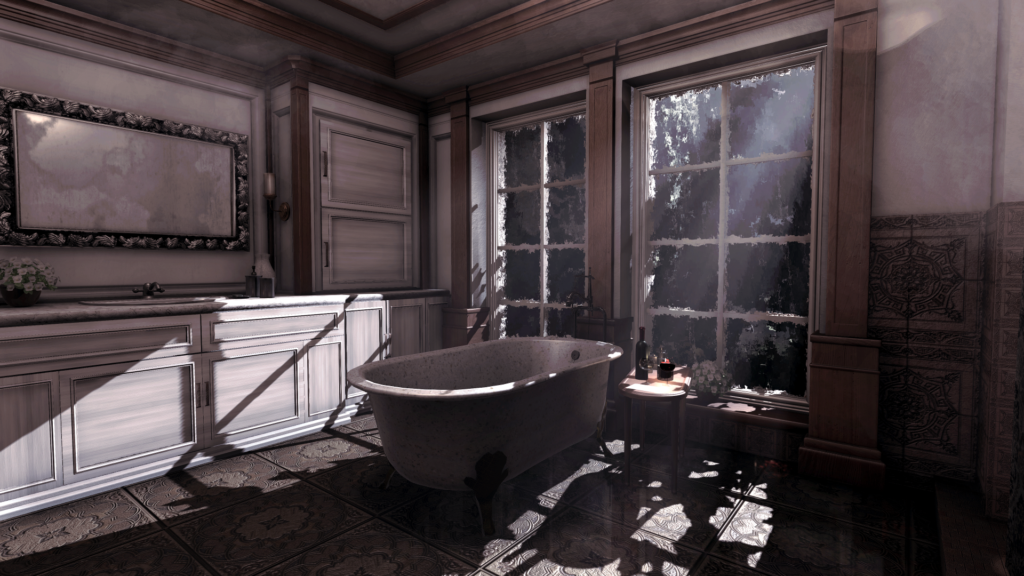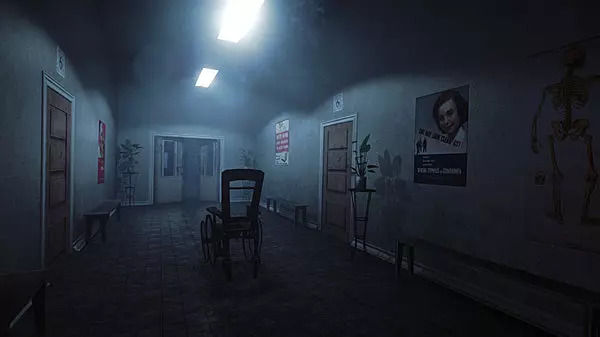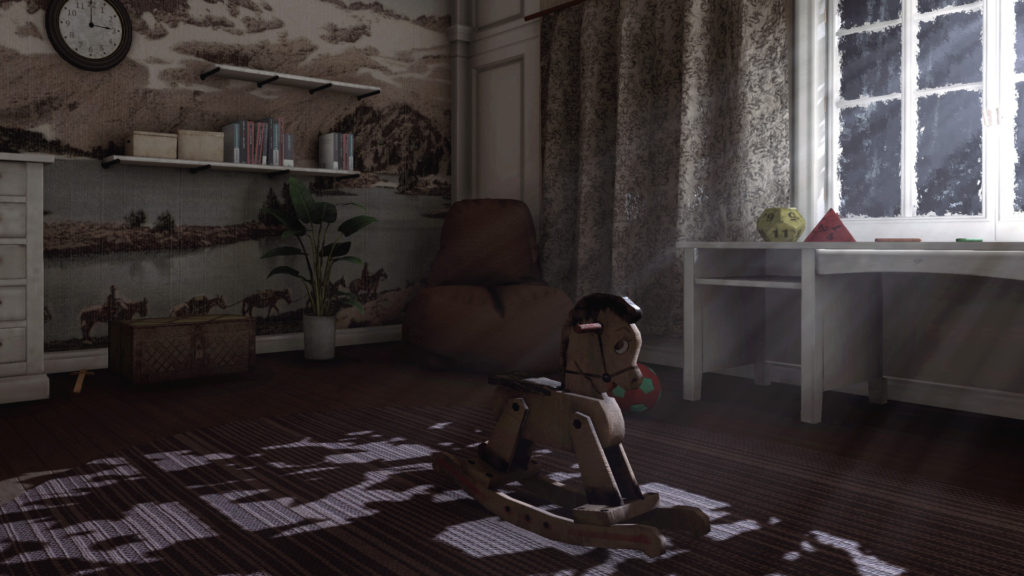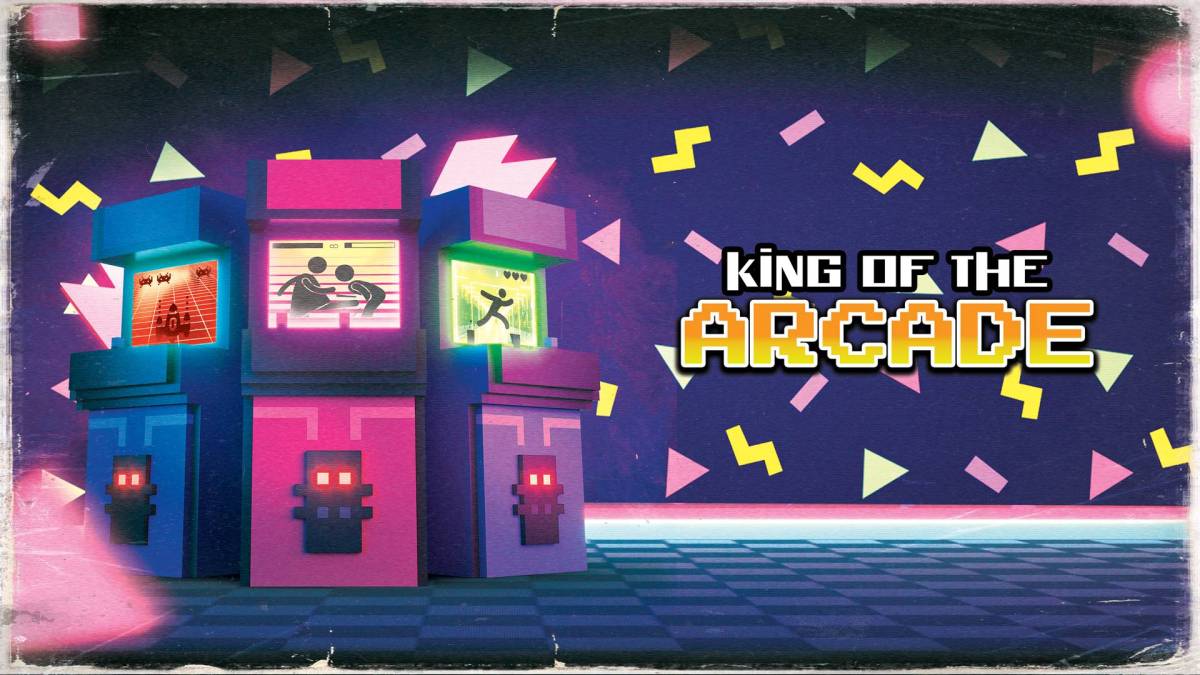Platforms: Playstation 4, Switch, Windows, and Xbox One (reviewed)
Rise of Insanity certainly has a striking cover image. It stuck in my mind enough that when it went on sale at some point, I bought it. Seeing that it was only a couple of hours long, I decided I’d start this little endeavor of playing through a few horror games for October with it. Unfortunately, it also nearly took the wind out of my sails completely.
You play as someone trying to piece together a mystery about a psychiatrist and his controversial new treatment for someone with a dissociative identity disorder. It’s pretty obvious who you’re playing as, but it’s never said outright. During your investigation, you’ll be subject to more than a few jump scares and some too-obvious homages to other horror works.

Rise of Insanity is a “walking simulator.” There’s no threat to your well-being in the game, save for two instances that are more brief setbacks than anything. You effectively just go from one point to the next with little to do in between or once you get there outside of letting things play out. There are some brief puzzles to be solved, but nothing that will strain your mind with even the most passive of playthroughs.
The thing I had an immediate issue with was the controls. Having played a ton of X-Wing and TIE Fighter in my youth, an inverted y-axis is practically necessary for me to play a first-person game of any kind. The option to invert is there, but it also reverses the x-axis. When you have to actively fight ingrained habits you’ve built up over nearly 30 years, it’s difficult to get immersed in an experience. Sure, the lack of needing to worry about my fumbling with the controls because there are only two brief sequences where they really matter in the slightest takes a lot of the sting out of that. Still, you try going to open a drawer, only to look up and away from instead for the umpteenth time and tell me that doesn’t take a toll on you. Perhaps not the largest of problems, but in an age when we’re trying to get games to be more accessible to more people, you’d think allowing you to pick which axis you want to invert would be a no-brainer.

The environmental designs aren’t terrible looking, but nothing is going to be particularly memorable about them. They’re strictly functional and perfunctory. Rundown hospital? Check. Fancy house that’s hiding some sinister secret? Check. Areas that you repeatedly visit with them changing in some way that indicates your grip on sanity is degrading? Check. They’re all a bit too obvious and been-there, done-that to ever connect or feel special.

And while the controls and environments were issues for me, the second largest was probably the localization. Both written and spoken lines were understandable enough but read like someone ran them through a 2002 version of Babel Fish. The spoken dialogue, in particular, was something to behold. The lines were usually brief enough to keep them from being horribly distracting, but one near the end was so bad that I couldn’t help but laugh through most of it. I could only come up with a couple of scenarios as to how this happened. First is that they had non-native English-speaking actors say the lines. I don’t have a problem with that, but the flat-American accents were so convincing that I would be rather impressed if that were the case. The other option was that they got some American voice actors who just read the lines without questioning if they should change how they read them at all, or they did question them and were basically told to cram it and just read them as written. Either way, I feel like I spent more time coming up with these theories than anyone at the Red Limb Studios spent time trying to figure out how their written dialogue would come across when read by someone outside of the development team. I’ll link to it below so you can watch it for yourself.
And finally, the biggest issue I had was the technical hurdles of the game itself. More than a few times, the game would either crash or freeze on me. In instances that became all too common over the two or three hours it took me to get through it, Rise of Insanity would stutter while loading a new scene, and I knew I was going to have to start that section over. In the middle of a jump scare, it froze, with the too-loud sound effect used for the jump blaring through my surround sound system. I was sure my speakers weren’t going to survive the abuse, but thankfully, they’ve held up. I thought my not-so-cheap speakers and receiver would need replacing, and that was the only moment I truly felt fear while playing through this.

Rise of Insanity is a bit more obvious than I was hoping. At no point was I ever surprised at the twists it’s story took. It becomes apparent early on where it’s going with nothing to make you doubt your instincts. Some of the imagery is decent, but, again, nothing stuck out as original. Lackluster level design, a localization bordering on terrible, and frequent technical issues make recommending skipping this easy. Your time and money are better spent elsewhere.





